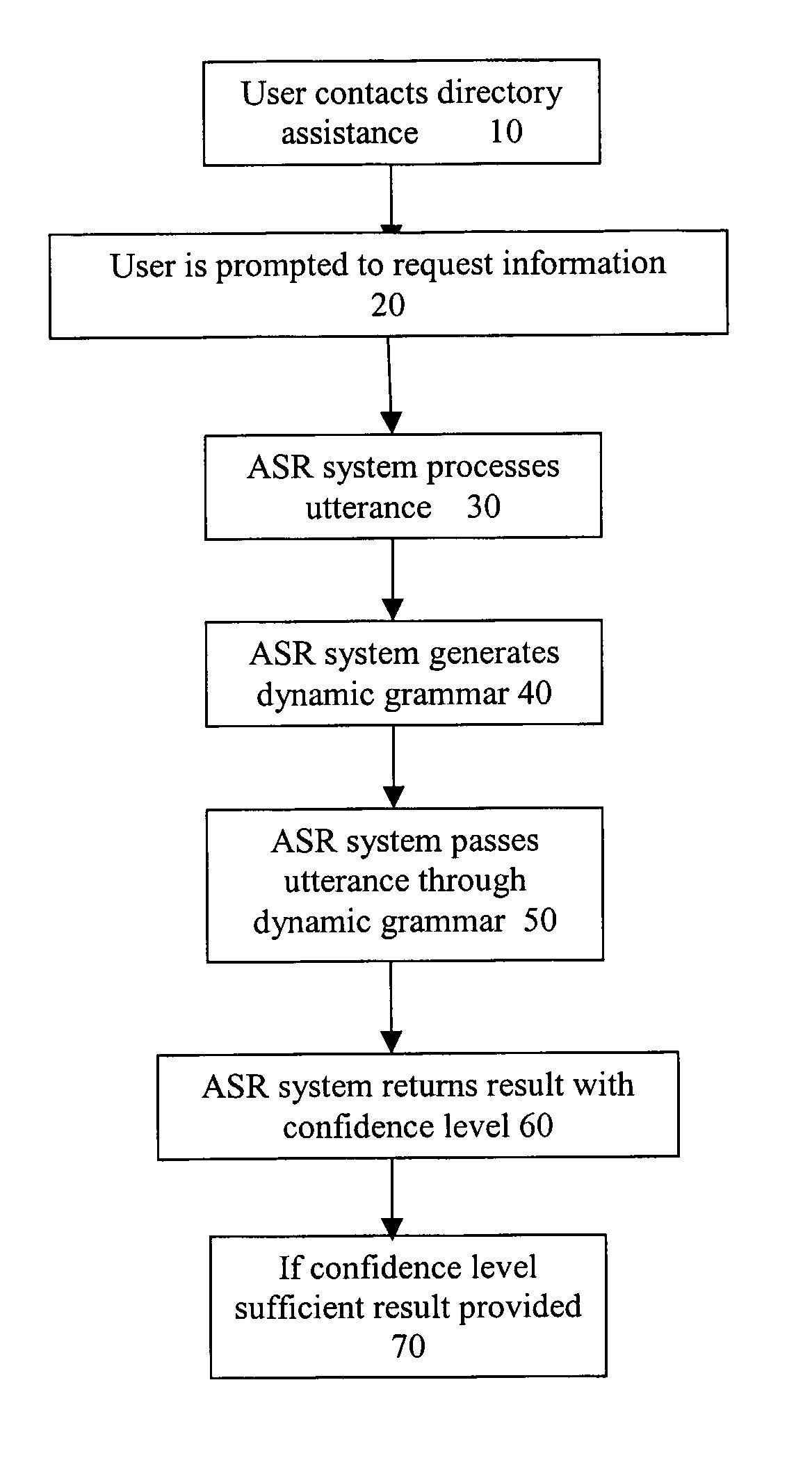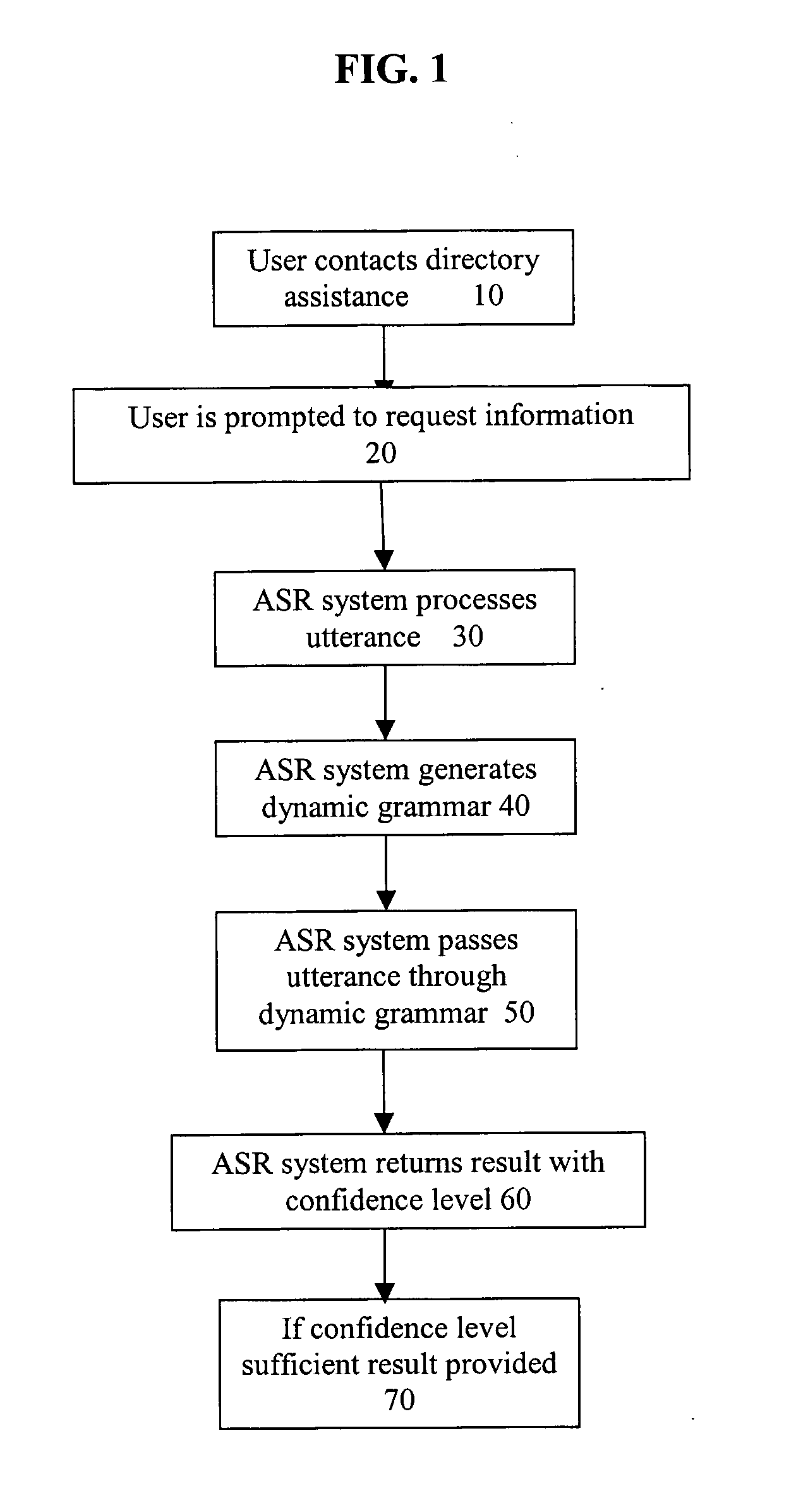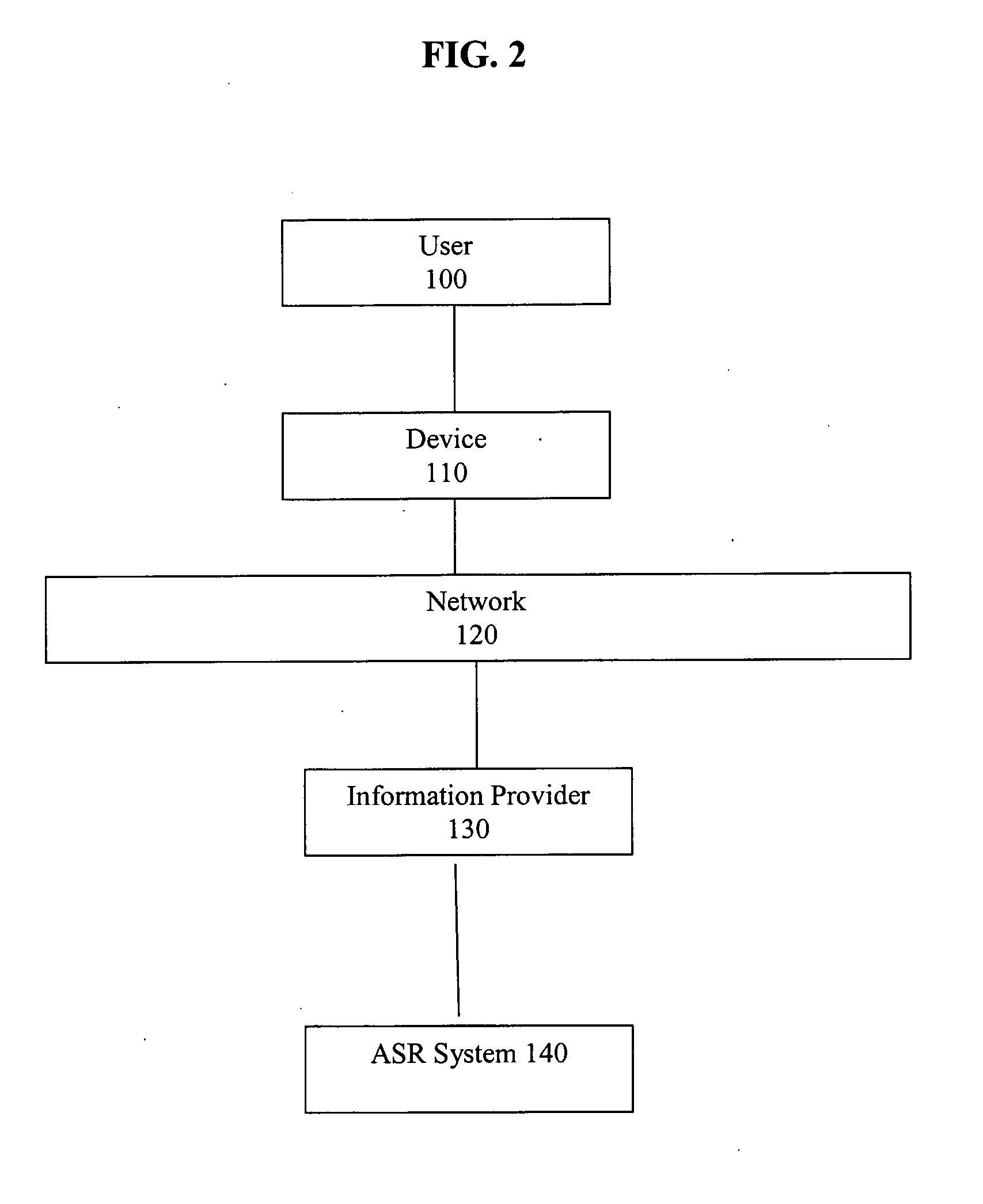Method And System For Providing Directory Assistance
a directory and system technology, applied in the field of method and system for providing directory assistance, can solve the problems of inability to match or generate an incorrect match, the system cannot meet the requirements of a certain period of time, and the grammar limitation is word order
- Summary
- Abstract
- Description
- Claims
- Application Information
AI Technical Summary
Benefits of technology
Problems solved by technology
Method used
Image
Examples
example 1
[0163]
User:“Wood Gundy”ASR“I found several businesses with similar sounding names,System:CIBC Wood Gundy Investments and CIBC Wood GundySecurities. Which one would you like?”
example 2
[0164]
User:“Budget Car”ASR“I found several businesses with similar sounding names:System:Budget Car & Truck Rental, Budget Car Sales, and Budget Renta Car & Truck. Which one would you like?”
[0165] The listings returned by the ASR system for the above examples are illustrated in FIG. 3.
[0166] As seen in FIG. 3, although “Budget Car & Truck Rental” and “Budget Rent a Car & Truck” represent the same logical entity (they have the same phone address), the ASR system typically does not make any assumptions and presents both names. These references are typically provided in the source data used to develop the listing database.
[0167] To carry out this process the ASR system uses the listings or a list of words and a location reference (such as an address, region or cross street), and obtains all of the distinct names represented by the listings or word list and returns a data structure indicating: the presentation form (i.e. “name”), the number of distinct names being returned, and an ord...
example 3
[0170]
User:“Altrom Canada Corp.”ASR“I found several locations: the Head Office, and the SkeenaSystem:Street location. Which one would you like?”
PUM
 Login to View More
Login to View More Abstract
Description
Claims
Application Information
 Login to View More
Login to View More - R&D
- Intellectual Property
- Life Sciences
- Materials
- Tech Scout
- Unparalleled Data Quality
- Higher Quality Content
- 60% Fewer Hallucinations
Browse by: Latest US Patents, China's latest patents, Technical Efficacy Thesaurus, Application Domain, Technology Topic, Popular Technical Reports.
© 2025 PatSnap. All rights reserved.Legal|Privacy policy|Modern Slavery Act Transparency Statement|Sitemap|About US| Contact US: help@patsnap.com



